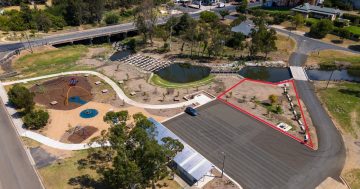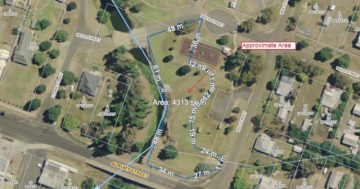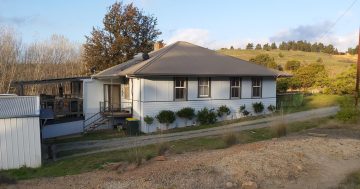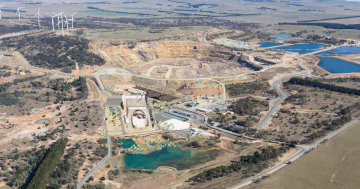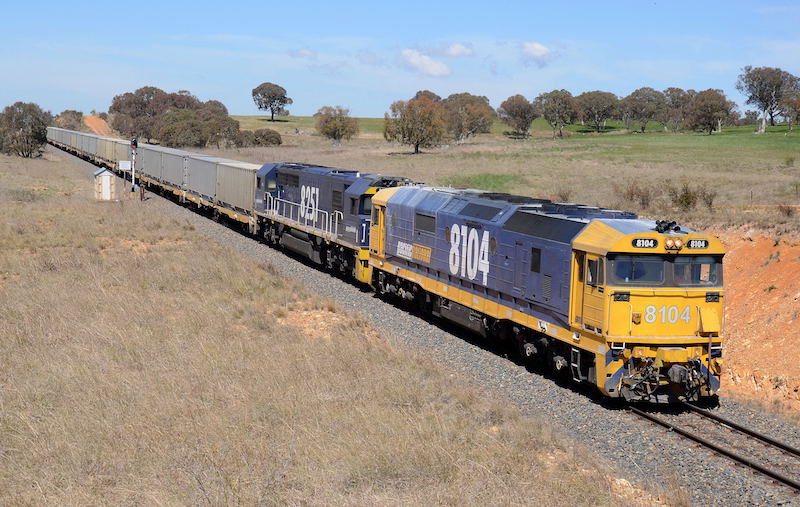
A train using the railway corridor that passes through Tarago. Lead contamination was detected at the rail yard during planning for the rail loop extension project. Photo: File.
Transport for NSW (TfNSW) has apologised to Tarago residents over promised lead remediation works that still haven’t begun.
The Tarago Lead Management Plan was developed in September 2020 and was due to be completed by 30 September 2021 under the original Voluntary Management Proposal (VMP) approved by the Environmental Protection Authority (EPA).
But when voting to adopt the village’s draft strategy at a recent council meeting, Goulburn Mulwaree councillors questioned why the works still hadn’t even started.
Council’s acting general manager Matt O’Rourke said he had recently spoken with TfNSW about the project to address the lead contamination along the village’s rail corridor, which had been given a revised completion date of the end of May 2022.
“What’s happened in the meantime is they’ve had a sign-off from the EPA as to how they’re going to do that,” he said.
“Going forward, [TfNSW] has to meet with the community … on this background work that is not visible, but has been happening.”
Councillor Andy Wood asked what accountability would be shouldered by TfNSW for not “taking care” of the issue in the allocated time frame.
“That concerns me because there is not enough trust between the community and EPA at Tarago as it already is,” he said.
Council resolved to add an amendment to the draft village strategy motion, for “council staff [to] seek clarification from the EPA and Transport for NSW regarding lead contamination and remediation, and report findings back to council.”
The EPA was notified by TfNSW about elevated lead levels at the Tarago rail yard in November 2019.
A TfNSW spokesperson said the EPA had “strict guidelines” for removing lead contamination and that the primary focus was to ensure the community’s safety.
“Resolving the preferred option for remediation was more complicated than anticipated and took longer than initially planned,” the spokesperson said.
“This has resulted in delays to visible action in the rail corridor. Transport apologises to the community for not keeping them fully informed of the delay.”
The EPA approved an updated VMP in March this year which included a revised timeline for remediation.

The current timeline for lead remediation works in Tarago. Photo: Transport for NSW.
TfNSW expected to complete the planning, environmental approvals and procurement stage for the updated VMP by late 2022, subject to receiving third-party planning approvals such as a development application.
“At this stage, we expect to complete the remediation within 18 months of receiving the third-party planning approvals,” the spokesperson said.
According to the latest TfNSW community update from July, three stages of the VMP had been completed, which included:
- Investigations to understand the extent and locations of the contamination in the rail corridor and surrounding properties
- Surface water and air quality monitoring for 12 months, which found risks to the community and environment were low
- Developing and implementing an Interim Action Plan to mitigate potential risks, including installation of warning signs, spraying the rail corridor with a specialised treatment to reduce dust, limiting the temporary stabling of trains on the loop line, removing contaminated sediment from drains and installing sediment controls
- Routine monthly inspections and monitoring the site after rainfall above 10 millimetres
- Developing a remediation action plan (RAP)
Four options for remediation were considered, with returning contaminated material to the former Woodlawn Mine identified as the preferred option.
As the RAP was being finalised, the mine went into care and maintenance. However the Woodlawn Mine has since resumed operations, which meant TfNSW would now evaluate the “possibility of returning lead-impacted waste to the mine for burial.”
Region Media contacted the EPA for comment.
TfNSW plan to hold a community information session in August to update locals on their next steps and to give the community the chance to give staff feedback on the project.
Meanwhile council’s planning and environment director is preparing a related report for the 2 August meeting, which is yet to be finalised.







